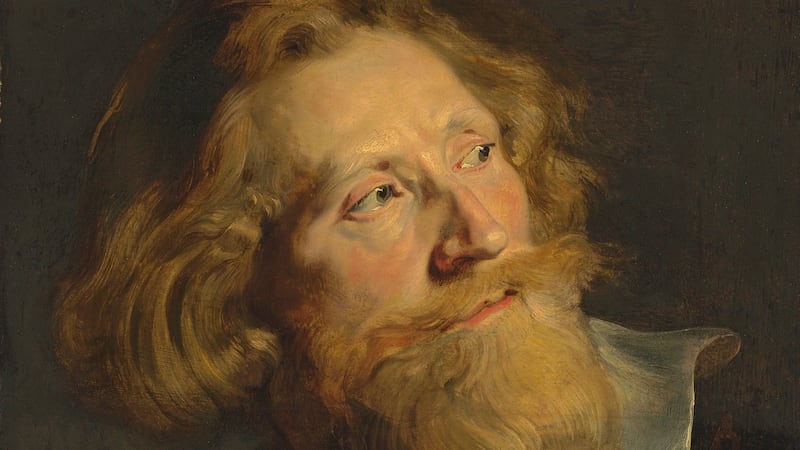Two 17th-century Flemish Old Master paintings worth a combined €5.5 million – from the Alfred Beit Collection at Russborough House that were withdrawn from auction in London – are to go on public display for the first time at the National Gallery of Ireland next month.
Unseen publicly in Ireland for many years, Head of a Bearded Man by Sir Peter Paul Rubens and A Village Kermesse Near Antwerp by David Teniers II are both expected to attract considerable interest when they are unveiled in February.
In addition to being hung for public display, images of both paintings already illustrate the months of September and October respectively in the 2017 National Gallery of Ireland calendar, published in association with the insurance company FBD.

The paintings were formerly in the collection of the late Sir Alfred and Lady Beit but, following a series of art thefts at Russborough House, they had been locked away in secure storage for almost two decades at an undisclosed location.
Withdrawn from auction following public disquiet, the paintings are now in permanent State ownership, having been sold by the Alfred Beit Foundation to raise funds for the conservation of the stately home in Co Wicklow.
Head of a Bearded Man has been donated to the gallery by media and telecoms billionaire Denis O'Brien and his wife, Catherine. O'Brien acquired the painting for €3.5 million under a Revenue Commissioners -approved scheme which enables donors to claim tax credit of 80 per cent, in this case €2.8 million. Before it was withdrawn from auction, Christie's had estimated the value of Head of a Bearded Man at between £2 million and £3 million (€2.3 million-€3.5 million).
Little is known about the provenance of the 400-year-old painting, but it was acquired from Agnew's – the London art dealers – in 1930 by Sir Otto Beit for an unknown sum and was then inherited by his son Sir Alfred Beit who moved to Ireland with his art collection in the 1950s.
The gallery described the oil-on-oak panel painting as “an outstanding example of Rubens’ fluid, yet decisive brushstrokes capturing a live model” and that the acquisition “significantly strengthens the gallery’s collection of works by the Flemish master”. While the identity of the bearded man is not known, the gallery said “based on a comparison with other portraits by the artist, the sitter may have been the Antwerp collector Anthonis Cornelisse.”
Lochlann Quinn
The second painting,
A Village Kermesse Near Antwerp
has been donated to the Gallery by businessman
Lochlann Quinn
(part-owner of Dublin’s Merrion Hotel) and his wife, Brenda. Quinn paid €2 million for the oil-on-copper painting which entitles him to tax credit of €1.6 million. The painting, valued by Christie’s between £1.2 million and £1.8 million (€1.4 million-€2.1 million), depicts peasants dancing and merry-making during a village fair in 17th-century Flanders and was described by experts at Christie’s as a “masterpiece” made when the artist “was at the peak of his fame”. David Teniers II is also known as David Teniers the Younger and was the son of David Teniers the Elder, also a famous artist.
A Village Kermesse near Antwerp has a well-documented provenance. It was originally owned by Johan van Schuylenburch, the Burgomaster (mayor) of the Dutch city of Haarlem, who died in 1735. At the auction of his estate, the painting sold for 910 florins. It had numerous owners in succeeding years – including Lucien Bonaparte, 1st Prince of Canino and Musignano – and was last auctioned, at Christie's in London in 1846, for 1,200 guineas. It was acquired for the Alfred Beit Collection in 1904, apparently in a private sale for an unknown sum.
The gallery, which already owned six paintings by the artist, described David Teniers II as "one of the most important genre painters of his time" who had "left an extraordinary output of work, mainly comprising peasant scenes". The gallery said A Village Kermesse near Antwerp, dating from the mid-1640s, was "a monumental and highly finished painting that ranks among Teniers' finest works" and that "other kermesse scenes of equal quality [by the artist] are at the Gemäldegalerie Alte Meister, Dresden, The State Hermitage Museum, Saint Petersburg, and the Staaliche Kunsthalle, Karlsruhe".











